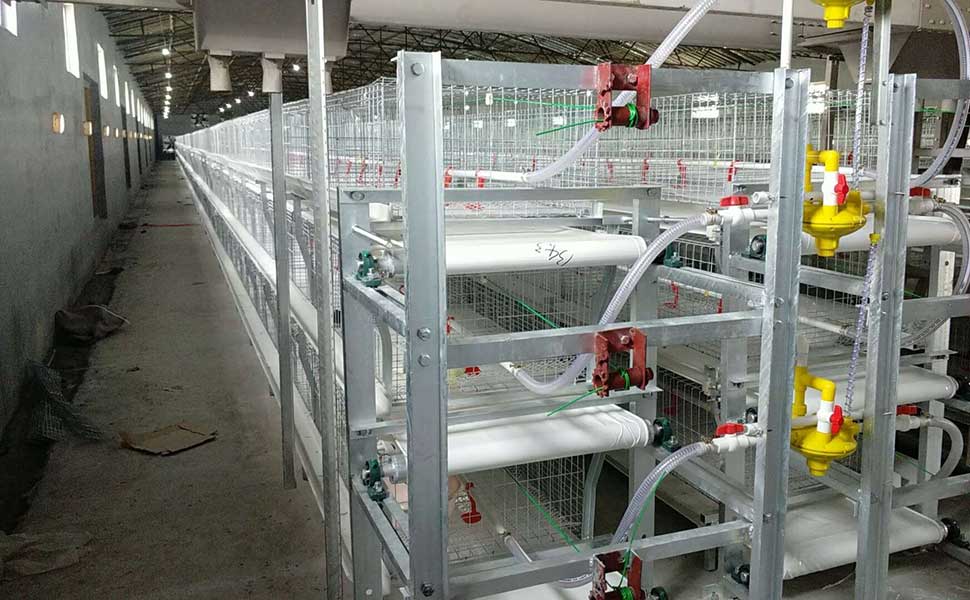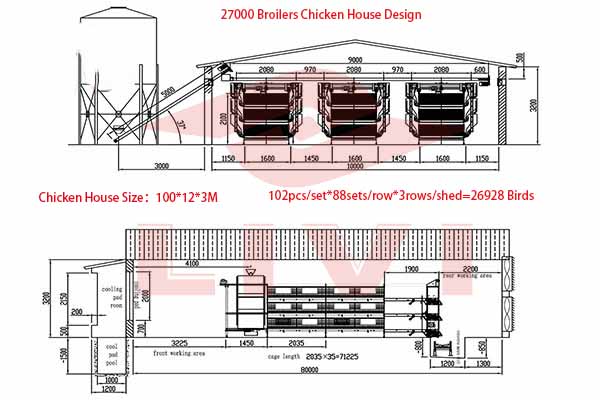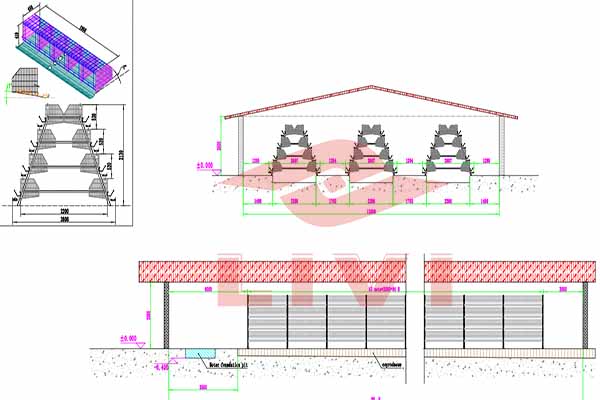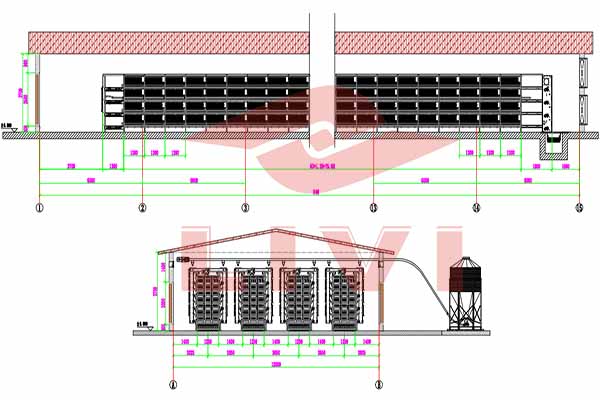Battery Cage System for Layers: Understanding the Price Factors
摘要:This article delves into the various factors that influence the price of battery cage systems for layer hens, including different types of cages, material choices, integration of automation, maintenance, durability, cost analysis, environmental design, market trends, buying guides, common issues and solutions, cage suitability for different farming scales, technological innovations, and future developments.
Types of Battery Cages
Battery cage systems for layers come in various designs, such as single-tier, multi-tier, and阶梯式(circular) systems. The single-tier system is the most common, offering a straightforward setup with a single level of cages. Multi-tier systems, on the other hand, maximize space by stacking cages vertically, which can significantly reduce the footprint required for the same number of hens. The choice of system can impact the price, with multi-tier systems generally being more expensive due to their complexity and larger materials requirement.
Material Choices
The materials used in the construction of battery cages can vary significantly in price. Metal cages are the most common, with steel being the preferred choice for its durability and strength. However, aluminum or galvanized steel may be used for cost considerations. The type of metal and its thickness will directly influence the price. Additionally, some systems use plastic components for feeding and watering, which can be more cost-effective but may not be as durable as metal.
Integration of Automation Equipment
The integration of automation equipment into battery cage systems can greatly enhance efficiency and animal welfare. Automated systems for feeding, watering, and egg collection can increase the price of the cage system. However, the long-term benefits of reduced labor costs and improved productivity often justify the higher initial investment.
Cleaning and Maintenance
Regular cleaning and maintenance are crucial for the health of the hens and the longevity of the cage system. The cost of cleaning and maintenance can be factored into the overall price of the system. Some systems are designed with easy-to-clean surfaces and components, which can reduce maintenance costs over time.
Durability and Cost Analysis
The durability of a battery cage system is a significant factor in its cost. High-quality materials and robust construction can lead to a longer lifespan, reducing the need for frequent replacements. A cost analysis should consider both the initial purchase price and the long-term operational costs, including maintenance and potential repairs.
Environmental Design
With increasing environmental concerns, some battery cage systems are designed with eco-friendly materials and energy-efficient features. These systems may come at a premium but can offer long-term savings and a positive environmental impact.
Market Trends
Market trends can influence the price of battery cage systems. As demand for higher welfare standards increases, the cost of more humane cage systems may rise. Conversely, as technology advances, new, more cost-effective solutions may become available.
Buying Guide
When purchasing a battery cage system, it’s essential to consider the specific needs of your operation. A buying guide should include factors such as the number of hens, space requirements, budget, and any specific features or technologies you require.
Common Issues and Solutions
Battery cage systems may encounter issues such as wire damage, feather pecking, or egg-eating. Understanding these common problems and their solutions can help in selecting the right system and reducing costs associated with repairs or replacements.
Cage Suitability for Different Farming Scales
The size of the farm will dictate the type of battery cage system needed. Small-scale operations may opt for simpler, more affordable systems, while larger farms may require more sophisticated and expensive setups to accommodate their scale.
Technological Innovations and Future Developments
Technological advancements are continuously improving battery cage systems. Innovations such as smart monitoring systems, automated health checks, and improved ventilation are expected to become more common, potentially affecting the price of future systems.





